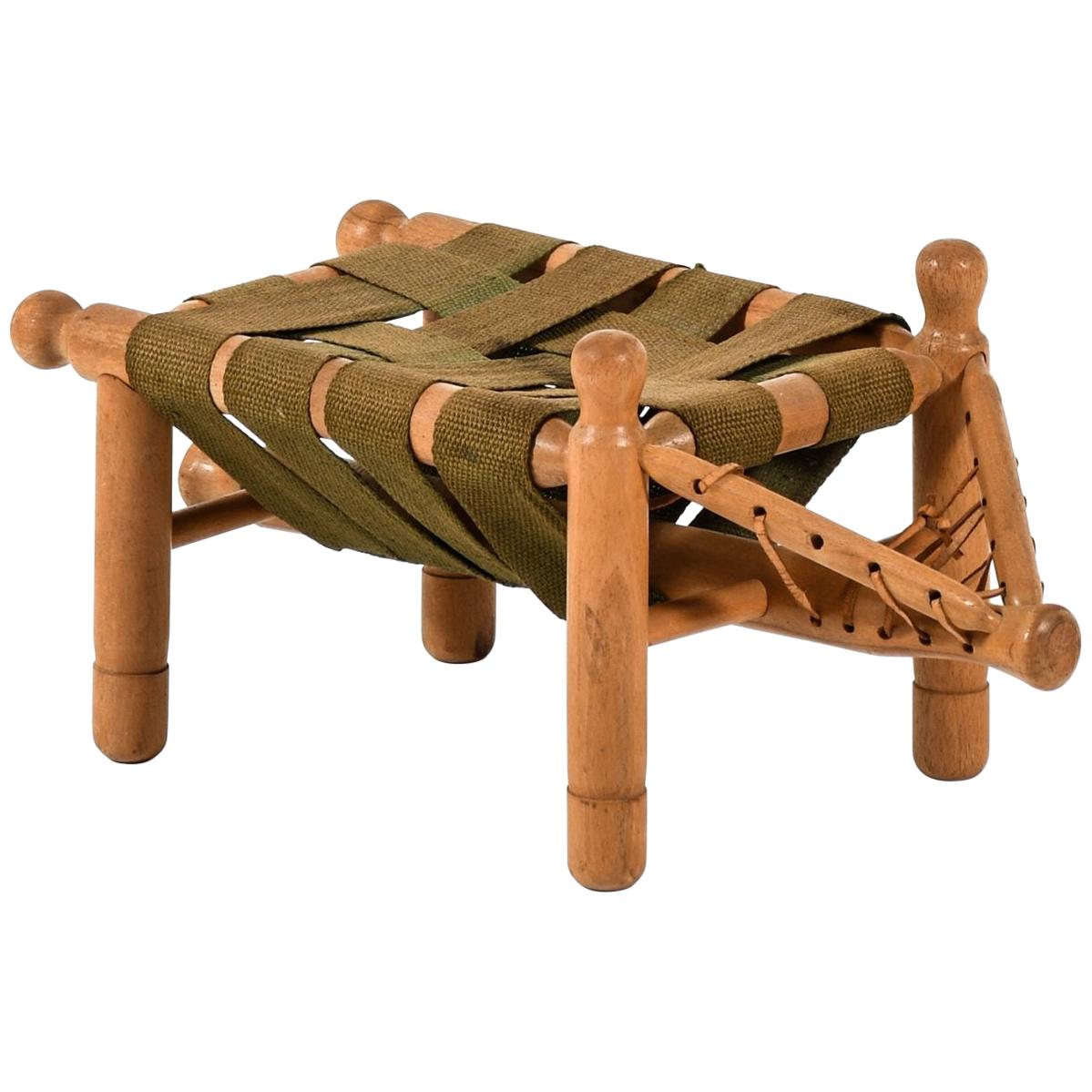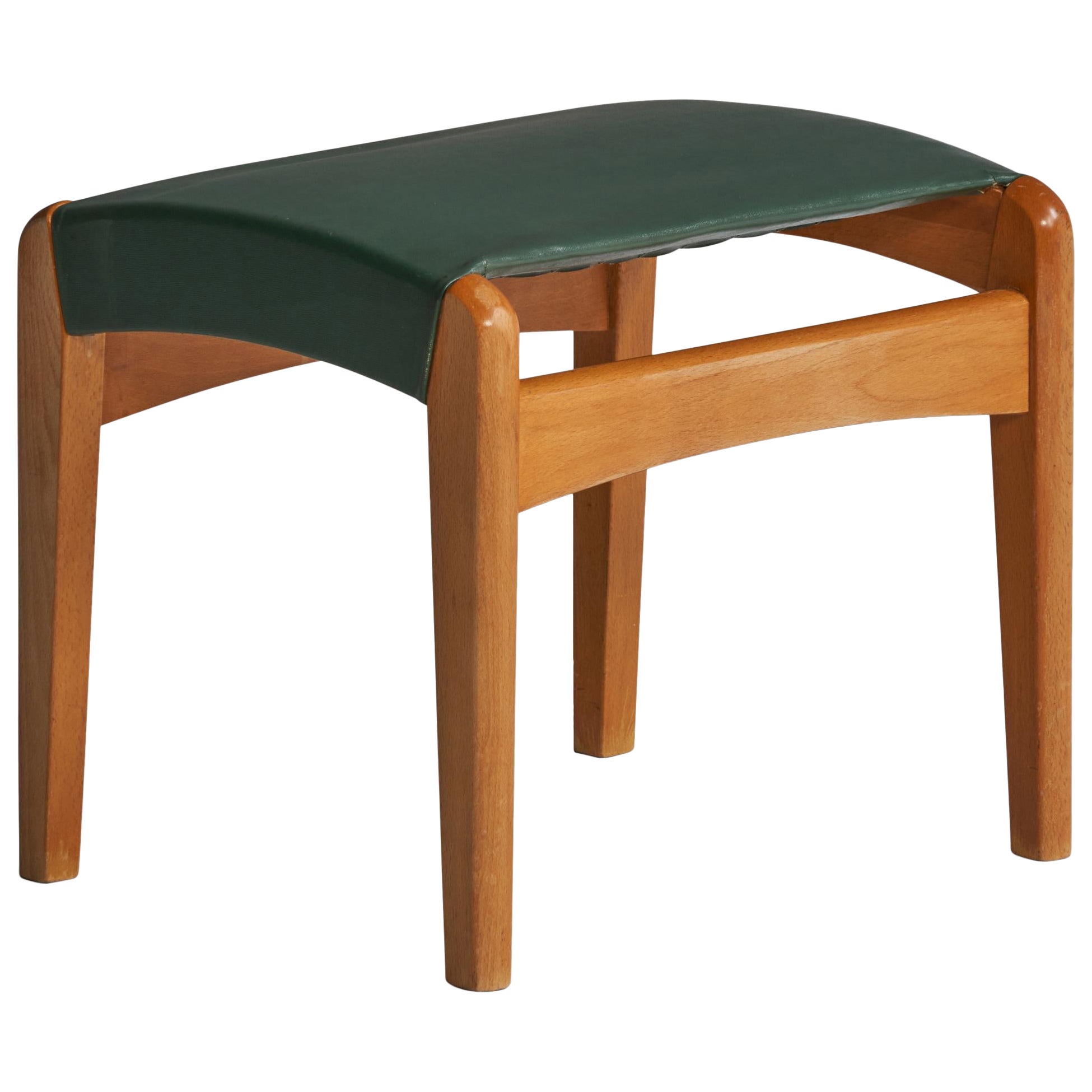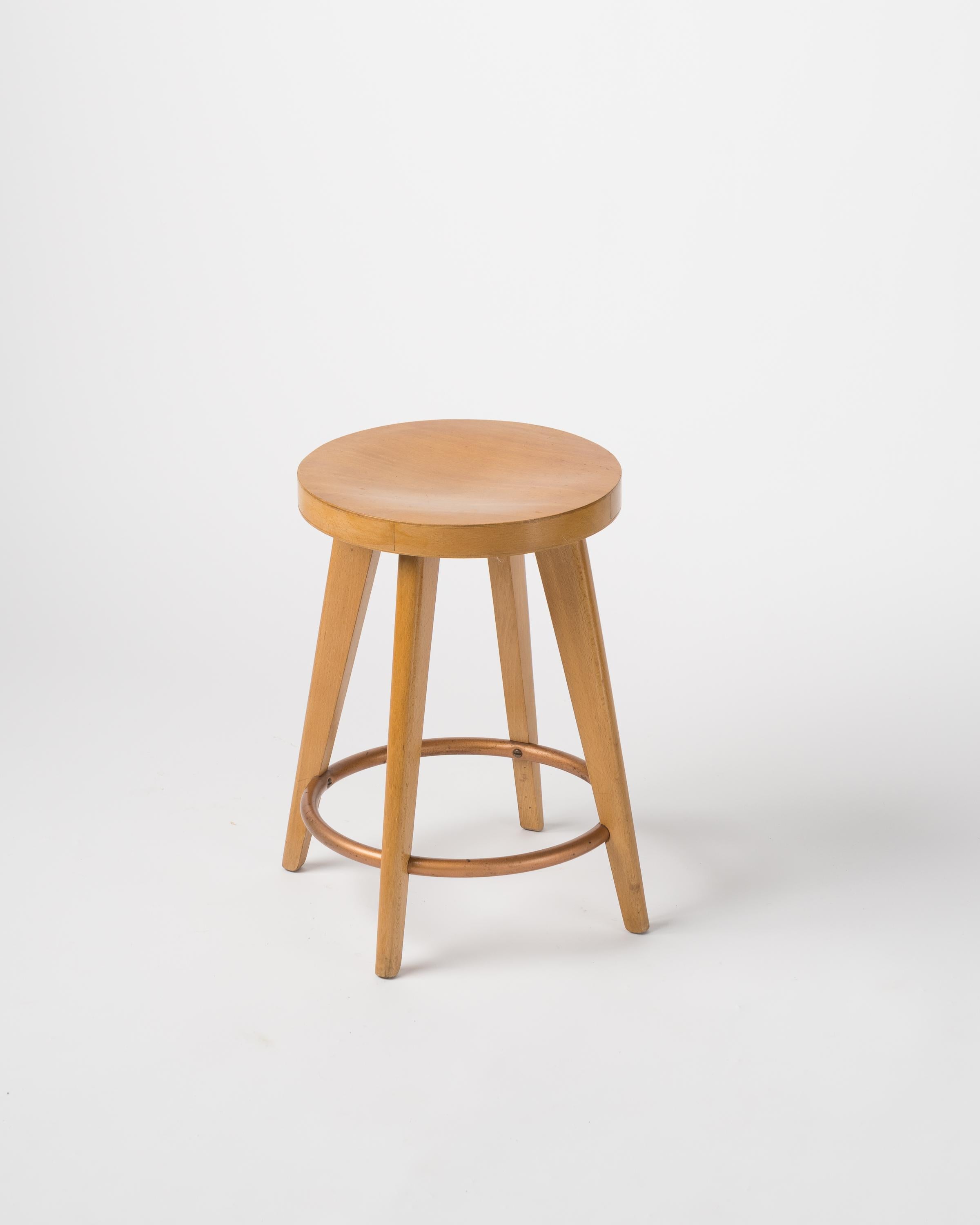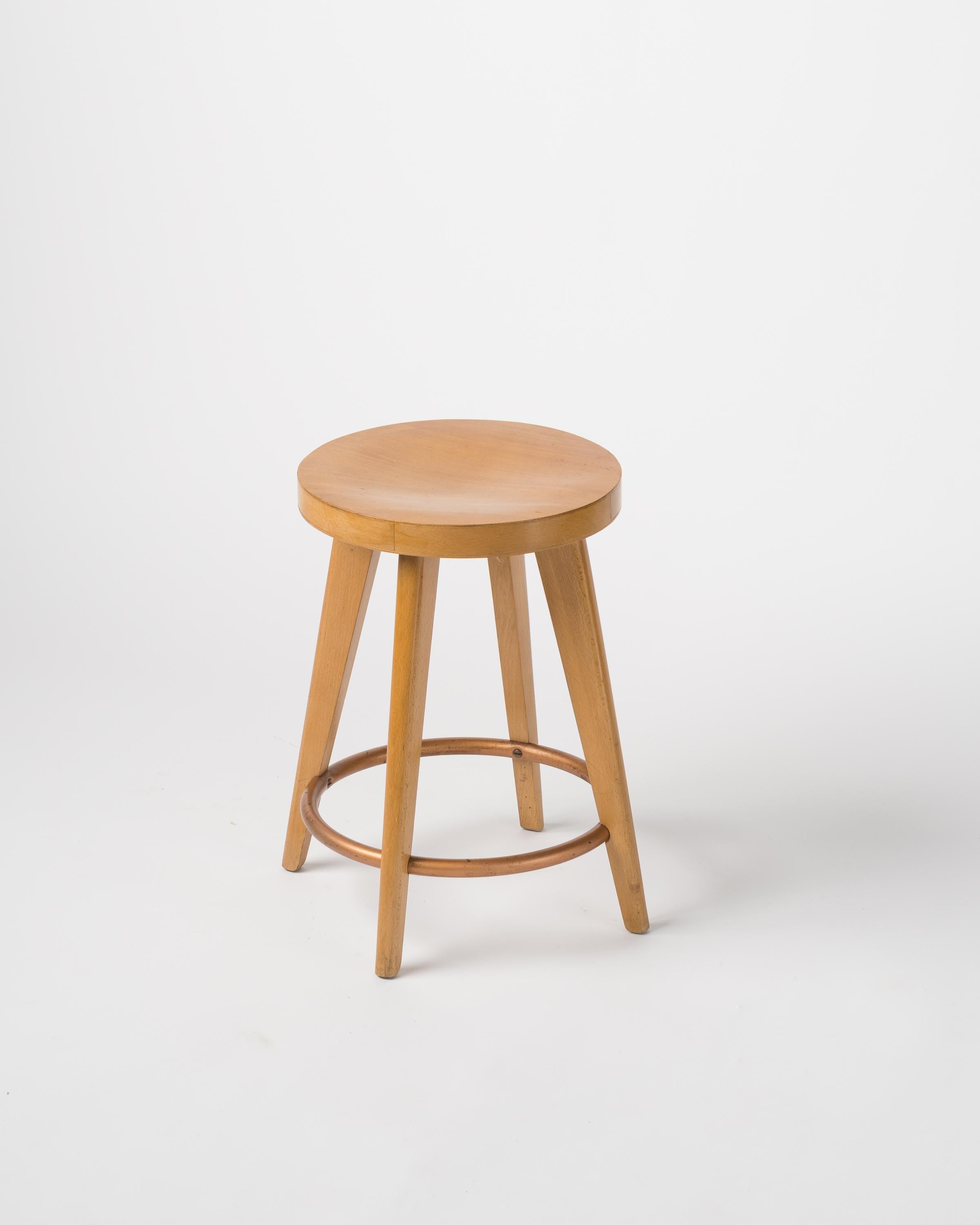Items Similar to Stool Designed by Erik Höglund for Kopparfly, Beech and Leather, Sweden, 1950s
Want more images or videos?
Request additional images or videos from the seller
1 of 12
Stool Designed by Erik Höglund for Kopparfly, Beech and Leather, Sweden, 1950s
About the Item
Stool designed by Erik Höglund for Kopparfly,
Sweden. 1950s.
Beech, hemp webbing and leather.
Dimensions:
W: 60 cm/ 23 1/2"
D: 29 cm/ 11 1/2"
- Creator:Erik Höglund (Designer)
- Dimensions:Height: 8.67 in (22 cm)Width: 23.63 in (60 cm)Depth: 11.42 in (29 cm)Seat Height: 8.67 in (22 cm)
- Style:Mid-Century Modern (Of the Period)
- Materials and Techniques:
- Place of Origin:
- Period:
- Date of Manufacture:1950s
- Condition:
- Seller Location:Stockholm, SE
- Reference Number:1stDibs: LU1006614630931
About the Seller
5.0
Recognized Seller
These prestigious sellers are industry leaders and represent the highest echelon for item quality and design.
Gold Seller
These expertly vetted sellers are highly rated and consistently exceed customer expectations.
Established in 1998
1stDibs seller since 2013
184 sales on 1stDibs
Typical response time: 2 hours
- ShippingRetrieving quote...Ships From: Stockholm, Sweden
- Return PolicyA return for this item may be initiated within 2 days of delivery.
More From This SellerView All
- Dressing Table Designed by Erik Höglund for Kopparfly, Sweden, 1960sBy Erik HöglundLocated in Stockholm, SEDressing table designed by Erik Höglund for Kopparfly, Sweden. 1960s. Oak and mirrored glass. Measurements: H: 130 cm / 4' 3'' W: 55 cm / 21 2/3'' D: 42 cm / 16 1/2''.Category
Mid-20th Century Swedish Mid-Century Modern Table Mirrors
MaterialsMirror, Oak
- Vase Designed by Erik Höglund for Boda, Sweden, 1950sBy Erik HöglundLocated in Stockholm, SEVase designed by Erik Höglund for Boda, Sweden. 1950's. Glass. Measurements: H: 27.5 cm/ 11 7/8'' Erik Höglund started working for Boda when the company and the entire Swedish gla...Category
Vintage 1950s Swedish Modern Vases
MaterialsGlass
- Candlestick, Designed by Erik Höglund for Boda, Sweden, 1960sBy Erik HöglundLocated in Stockholm, SECandlestick, designed by Erik Höglund for Boda, Sweden, 1960s. Erik Höglund was a Swedish artist known for his experimentative work with amber glass. His glass bottles, chandeliers, and candelabras are characterized by their delicate, geometric designs. At age 25, Höglund became the youngest artist to ever receive the Lunning Prize, awarded annually to up-and-coming Scandinavian designers. He created rustic designs that allowed for everyday, multiple uses of glass, allowing it to be both functional and aesthetic...Category
Vintage 1960s Swedish Scandinavian Modern Candlesticks
MaterialsBrass
- Vase Designed by Erik Höglund, Sweden, 1970sBy Erik HöglundLocated in Stockholm, SEVase designed by Erik Höglund, Sweden. 1970's. Glass. Dimensions: H: 54 cm/ 21 1/4" D: 13.3 cm/ 5 1/8" Erik Höglund started working for Boda when the company and the entire Swedis...Category
Vintage 1970s Swedish Modern Vases
MaterialsGlass
- Stool Model 927 Designed by Josef Frank for Svenskt Tenn, Sweden, 1950sBy Josef FrankLocated in Stockholm, SEStool model 927 designed by Josef Frank for Svenskt Tenn, Sweden, 1950s. Mahogany and rattan. Measures: H: 43 cm W: 43 cm D: 28 cm Josef Frank was a true European, he was also a pioneer of what would become classic 20th century Swedish design and the “Scandinavian Design Style”. Austrian- born Frank started his design career as an architect after having trained at the Technische Hochschule in Vienna between 1903 and 1910. After his training he went on to teach at Kunstgewerbeschule (The Viennese School of Arts and crafts) where he developed and espoused the new school of modernist thinking towards Architecture and Design that was coming to fruition in Vienna at the time. He also went on to lead the Vienna Werkbund throughout the 1920s. This was a truly progressive group of Architects and Designers who set about improving the daily lives of Austrian people through modernist design and architecture in partnership with Arts and Crafts ideals and construction. Frank’s leadership of the Werkbund had already cemented his place at the forefront of European design. Frank’s time in Vienna was typified by his design for the “Die Wohnung” exhibition of the Deutscher Werkbund in Stuttgart, 1927 where he exhibited along side his contemporaries at the forefront of design, such as the likes of Le Corbusier and Walter Gropius. Here he showed a specially designed pair of flat-roofed reinforced concrete houses in what is now seen as a typical modernist style. What separated Frank’s house from the other 32 houses of the exhibition was the interior and furniture inside the building. It was described as “Neo-Classical” and filled with an eclectic mix of period pieces, modern design and pieces designed by Frank himself that seemed to cross the two worlds. This was a complete opposite direction to that which his fellow Architects were travelling in with their pared back and angular aesthetics. Frank said of his own work: “The house is not a work of art, simply a place where one lives,” and by this reasoning Frank rejected the regimental mechanisation of the living space that his contemporaries believed in, instead he set about creating congenial and spontaneous interiors. Frank’s practice saw him placing the bright colours and the soft forms of nature back into the furnishings and interiors that he thought modernism sorely mist. Frank, along with Oskar Walch set up Haus und Garten in Vienna in 1925. This was Frank’s first commercial foray into furniture and home furnishings and the company went on to become the most influential furnishing house in Vienna with a riotous depth of colour and interesting shapes becoming the trademark of their design. However this success was to come to an end with rise of Nazism in Vienna in the early 1930’s. Frank was Jewish, and he and his wife Anna decided they would leave Vienna for her motherland: Sweden, in 1933. Frank continued to design for Haus and Garten, visiting Vienna occasionally and designing the pieces that would continue to be the company’s best sellers long after Frank was forced to hand the company over in 1938 after the Third Reich annexation of Austria. When Josef and Anna had moved to Sweden Frank had struck up a working relationship with Design shop owner Estrid Ericson. Ericson was the proprietor of Svenskt Tenn that at this point was a successful interiors shop in Stockholm with the royal warrant of appointment to the Swedish Royal Household. In 1935 Frank had become the chief designer for Svenskt Tenn and had set about putting all of his creative effort into his designs for the company. At the World Expositions in Paris in 1937 and New York in 1939 the world saw for the first time the wealth of products that Frank had been working on, ranging from candlesticks to cabinets, there was not a domestic object that Frank had not subjected to his colourful, comfortable and organic style of Modernism. Frank’s new school of Modernism championed ideas such as chairs having a freeing, open back and that “If one desires the room to be comfortable…all pieces of furniture should allow for a free view of the separating line between the floor and the wall. A cabinet without legs breaks this line and thus reduces the feeling of space.” A world-wide audience tired of classic Modernism’s furniture with solid planes and aggressive forms leapt upon these ideas and Franks natural and bright designs for Svenskt Tenn became internationally desired. Frank created over 2000 designs for Svenskt Tenn and his products continue to be the core of their brand. Frank’s rejections of tubular metal and heavy lacquers within his furniture have insured his unique light form of Modernism continues to influence and flourish today. His natural toned mahogany and walnut pieces along with his tactile leather covered and brightly shaded lighting still bring the forms of nature back into the home. Original Frank pieces are now increasingly rare, highly desirable and are the epitome of “Scandinavian Design”. Renowned Designer and Academic Isle Crawford...Category
Vintage 1950s Swedish Mid-Century Modern Chairs
MaterialsRattan, Mahogany
- Stool model 1352 designed by Hans-Agne Jakobsson for Åhus AB, Sweden, 1950sBy Hans-Agne JakobssonLocated in Stockholm, SEStool model 1352 designed by Hans-Agne Jakobsson for Åhus AB, Sweden, 1950s. Material: Leather, metal, and brass.Category
Vintage 1950s Swedish Mid-Century Modern Stools
MaterialsMetal, Brass
You May Also Like
- Stool, Erik Hoglund, Sweden, 1950sBy Erik HöglundLocated in Los Gatos, CAErik Höglund, pall, ”Grisen”, (the pig), made by Boda Trä (Boda Wood). 1950s Frame of beech and leather, with seat of green hemp. Branded Boda Trä Measures: Length 60, depth 30...Category
Vintage 1950s Swedish Scandinavian Modern Stools
MaterialsBeech
- Scandinavian Modern stool on medar by Erik Höglund of beechBy Erik HöglundLocated in Skå, SEEmbrace the captivating world of Scandinavian Modern design with the Erik Höglund Stool on Medar Model Gungfly, a true masterpiece of artistry and functionality. Crafted with precisi...Category
Vintage 1960s Swedish Scandinavian Modern Stools
MaterialsBeech
- Erik Höglund Stool Produced by Boda Trä in SwedenBy Erik HöglundLocated in Limhamn, Skåne länStool designed by Erik Höglund. Produced by Boda Trä in Sweden.Category
Vintage 1950s Swedish Scandinavian Modern Stools
MaterialsHemp, Beech
- Swedish Designer, Stool, Beech, Leather, Sweden, 1950sLocated in High Point, NCA green leather and beech stool designed and produced in Sweden, c. 1950s. Seat height: 15.5”Category
Vintage 1950s Swedish Mid-Century Modern Stools
MaterialsLeather, Beech
- Beech Stool by Stella, France, 1950sLocated in New York, NYfour legged and copper plated steel ring stool by Stella manufacture France 1950's this item will ship from France Price does not include handling, shipping and possible customs r...Category
Vintage 1950s French Stools
MaterialsCopper
- Beech Stool by Stella, France, 1950sBy StellaLocated in New York, NYfour legged and copper plated steel ring stool by Stella manufacture France 1950's this item will ship from France and can be returned to either France or to an upstate NY USA location...Category
Vintage 1950s French Stools
MaterialsCopper





